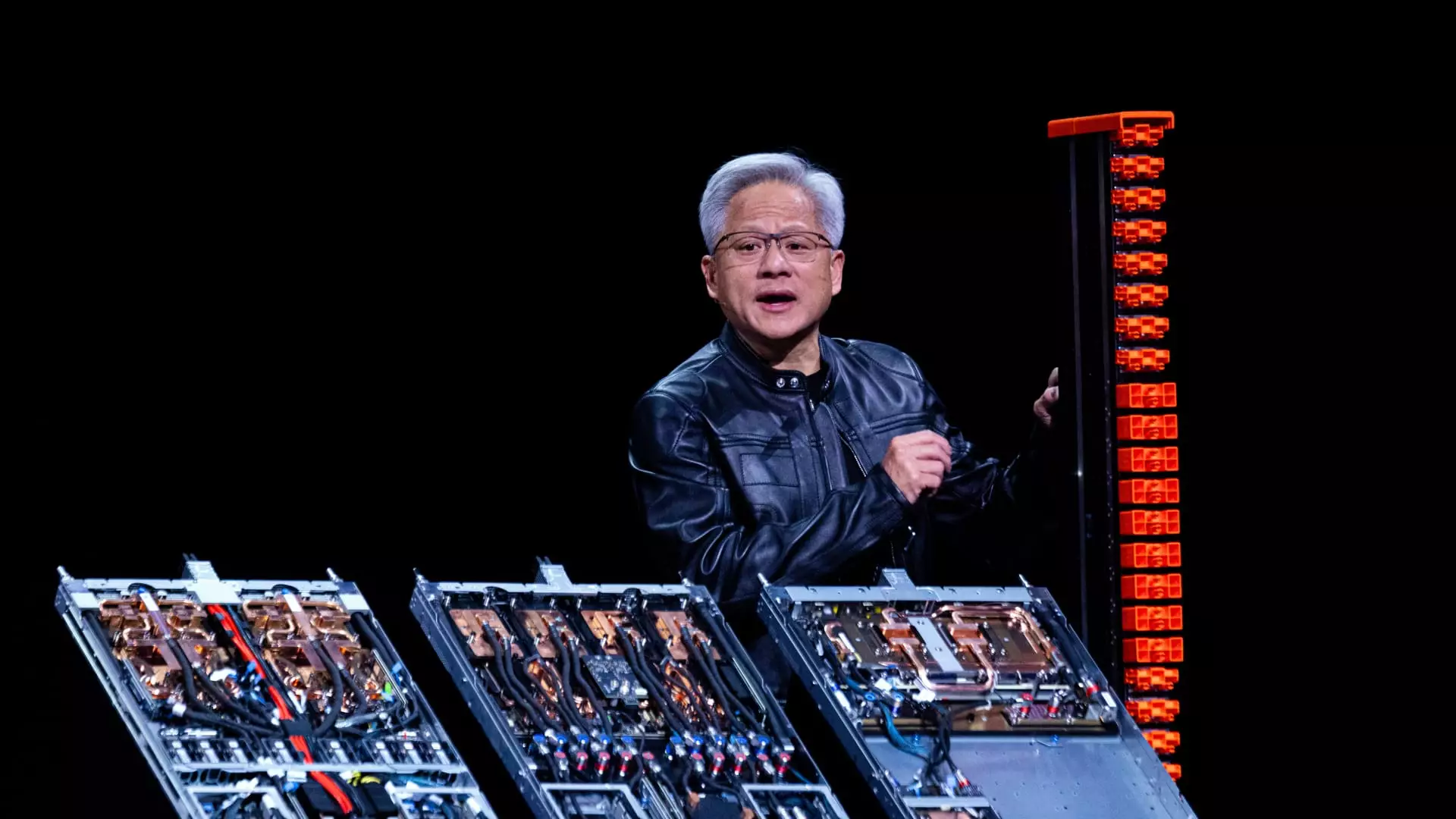In an age defined by rapid advancements in artificial intelligence, Nvidia’s CEO Jensen Huang unveiled an audacious initiative that may well redefine the contours of the tech landscape. During his keynote at Computex 2025, Huang introduced the NVLink Fusion program, a transformative upgrade to Nvidia’s existing NVLink technology. Traditionally a fortress for Nvidia’s proprietary technology, NVLink is now being offered as a more inclusive platform, allowing non-Nvidia CPUs and ASICs to integrate with Nvidia’s graphics processing units (GPUs). This seismic shift signals Nvidia’s laser focus on solidifying its dominance in AI infrastructure, but it begs the essential question: is opening the gates a strategic masterstroke or a risky gamble?
The Coalition of Innovators
By welcoming partners such as MediaTek, Marvell, and Qualcomm Technologies into the NVLink Fusion fold, Nvidia is not merely playing defense; it is actively forging an alliance that could reshape the competitive dynamics of AI. This willingness to collaborate highlights a paradigm shift in the tech arena—where cooperation between companies may outweigh a purely competitive approach. Rather than viewing rival ASIC designers as threats, Nvidia sees them as potential allies in building a more robust AI infrastructure.
According to tech analyst Ray Wang, this strategy positions Nvidia as the heart of next-generation AI ecosystems, extending its influence even in environments that do not utilize Nvidia chips exclusively. The idea of collaborating with competitors in such a way is refreshing, yet it is inherently fraught with challenges. Will these partnerships generate genuine value, or will they dilute Nvidia’s brand integrity in the competitive AI sector? The risks are palpable, but so too are the rewards.
Open Doors, Uncertain Outcomes
One of the main critiques levied against NVLink Fusion comes from analysts like Rolf Bulk, who argue that while the program offers flexibility, it may inadvertently soften demand for Nvidia’s own CPUs. It brings to the forefront the dilemma of whether Nvidia’s desire to remain the leader in AI will come at the cost of its lucrative hardware sales. In a field where data centers are clamoring for ever-evolving technology, opening up to competition could backfire.
Nevertheless, there’s an undeniable sense of optimism surrounding this initiative. The flexibility NVLink Fusion promises could very well enhance the appeal of Nvidia’s GPU solutions, especially against emerging architectures from the likes of Broadcom and AMD. The multifaceted approach of opening up crucial systems while simultaneously bolstering Nvidia’s foundational products could be a winning strategy—if executed with finesse.
AI’s Expanding Frontier
The technology titan didn’t stop with NVLink Fusion; it also rolled out the NVIDIA DGX Cloud Lepton, an ambitious platform aimed at creating a marketplace for global AI developers seeking GPU resources. The platform promises to address a critical gap in the market: the accessibility and reliability of high-performance GPU resources. By unifying cloud services and GPU access, Nvidia appears to be setting the stage for the burgeoning demands of AI development.
But the question lingers: will the collaboration fostered by hardware openness unlock new levels of creativity and performance in AI, or will it lead to a fragmentation of efforts? The potential for innovation is monumental, yet equally daunting. With its ambitious initiatives, Nvidia is undoubtedly placing itself at the center of a swirling maelstrom of possibility, but not without risk.
A Future Reimagined
As the technology sphere races forward, Nvidia’s commitment to innovation and collaboration could spell a transformative chapter for AI development. By leveraging resources outside its immediate portfolio, Nvidia may well encourage a diverse ecosystem that breeds novel advancements. However, the execution of NVLink Fusion and related initiatives will require not just technical brilliance but strategic acumen to navigate the complexities that come with interoperability.
Nvidia is at a crossroads. The path it chooses not only defines its future but may very well chart the future of the AI sector as a whole. In a world where collaboration could be the key to unlocking the next levels of technological innovation, Nvidia’s bold foray into openness could either be a brilliant stroke of genius or a miscalculated risk that might haunt the company’s ambitions for years to come. Time will reveal whether Nvidia’s current trajectory will lead to unparalleled success or a destabilizing quagmire.



Leave a Reply